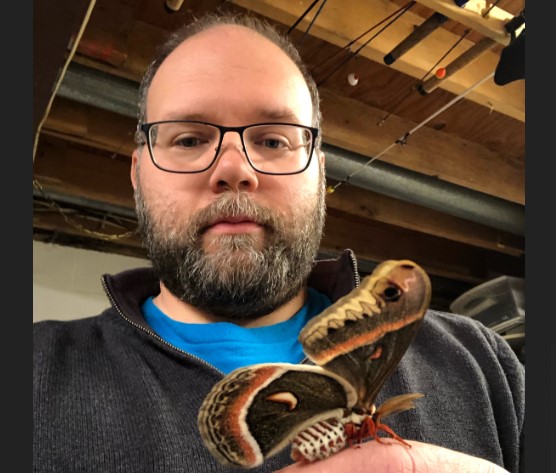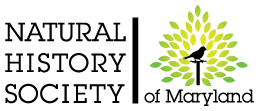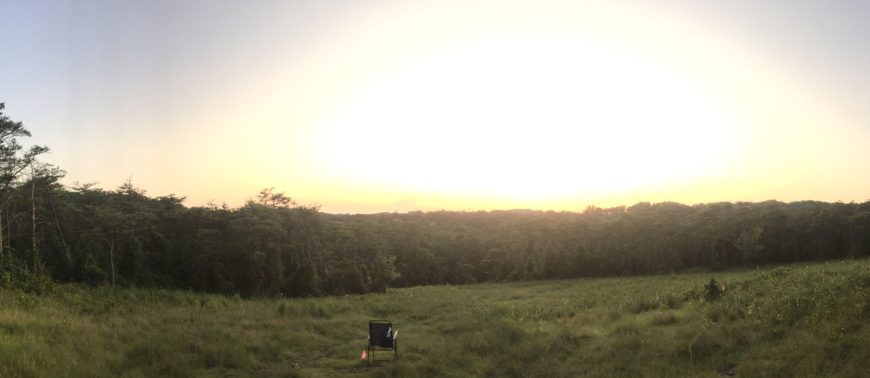Last year, the Natural History Society of Maryland (NHSM) conducted a five-month field survey in Lake Roland Park (formerly Robert E. Lee Park). to determine the diversity of moths and butterflies within a rare serpentine barrens habitat that occurs on the north side of the Park as part of a larger restoration plan.
Serpentine barrens possess nutrient-poor and shallow soils that are high in heavy metals. Over time, unique plant communities have evolved to thrive in these harsh conditions. There used to be many serpentine barrens throughout the Mid-Atlantic. However, many of these sites were historically mined for chromite and copper, others covered by development. The largest and most well-known serpentine barren in the area is Soldiers Delight Natural Environmental Area in Owings Mills.
One of the first steps in creating a restoration plan is to document what plants and animals already exists on the site. Finding plants that may occur in low numbers for a very short period by visual survey can be incredibly challenging. Likewise, sites that are weedy, rocky or with step elevation changes may not be safe for intensive surveying. Due to these challenges, insect surveys are often used to look for insects that are specialists on rare or hard to find plant species.
Moths and butterflies, scientifically known as Lepidoptera, are a good candidate for these surveys as almost all Lepidoptera feed on plants and are easy to find and collect.

Just before sundown, and into the evening when the park is quiet and empty, the resident box turtles, frogs, toads, katydids, bats, deer, owls, hawks and an assortment of other birds came out of hiding. Those magical moments helped to balance out the physical exhaustion of carrying in, setting up, and hauling out all of the equipment at midnight each night. There were also ticks, mosquitoes and chiggers. A warm-blooded mammal standing, kneeling or sitting in an open field as the air temperature starts to drop is the equivalent of a neon sign over a restaurant in the middle of the desert. Over the 5-month survey, more than 2,200 butterflies and moths were collected.
After specimens are photographed or collected, they need to be identified. The common moths and butterflies take only a few minutes to ID, label and record. However, the little brown moth that has no easily recognizable pattern and is only ½” wing tip to wing tip, will need to be dissected and examined for hours.
There are many examples of moths that look similar but are actually different species (see picture below). The specimens are all Noctuid moths, commonly known as owlet moths. All three have similar coloration and wingspans of approximately 1.5 inches. Yet, the 3 specimens below represent 3 different species in 2 different genera. Often when identifying these, it really does come down to the smallest details; color of the hind wing, how many spots in the forewing, or length of wing span – 1.4” or 1.6”?

Here’s another example why identification has to take place in a laboratory setting. The two moths below are very similar and were collected sometimes on the same night. The one on the left is a Twirler moth (Gelechiidae) and the one on the right is an Owlet moth (Family Noctuidae).

After countless hours identifying moths from the Lake Roland serpentine barrens, more than 370 different species from 36 families, including at least 2 new species that have yet to be named were identified thereby greatly enhancing knowledge of the biodiversity of Baltimore’s serpentine barrens.
Lake Roland Nature Council is now working with an ecologist to incorporate the butterfly and moth data into the serpentine barrens restoration plan. A manuscript of the findings of this study are currently being developed and will hopefully be published later this year. This project was made possible by funding from the Lake Roland Nature Council (Baltimore, Maryland) and with the help of the following volunteers: Peter Lev, Jeffrey Budnitz, Jonathan Wood, Kurt Davis, Howdy Knipp, Roger Gookin, Dwight Johnson, and Colleen Lacy.

Jim Young
Curator of Terrestrial Invertebrates
Natural History Society of Maryland

